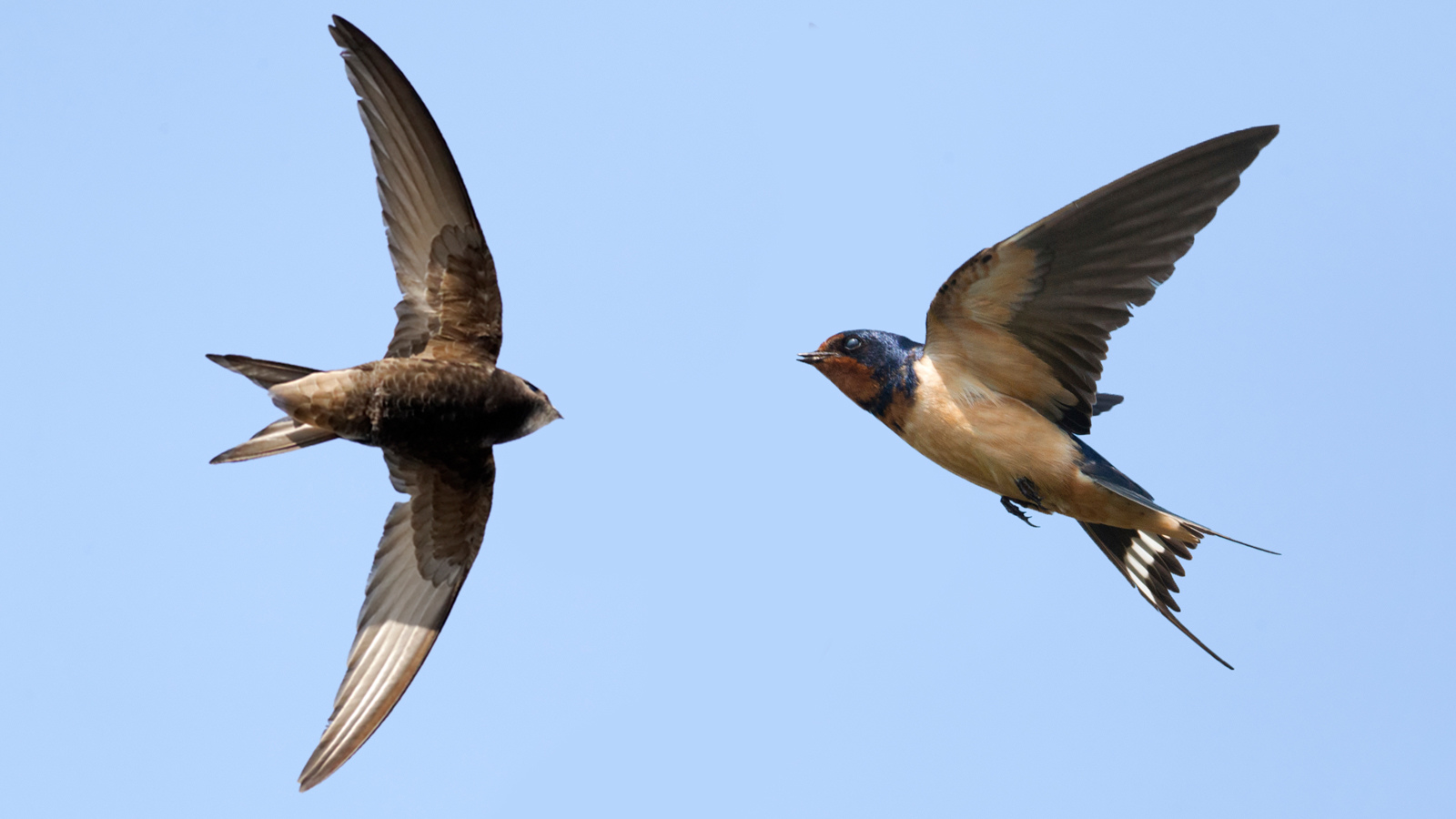
Swifts are fascinating creatures that have captured the curiosity of many animal enthusiasts. Known for their remarkable aerial abilities and distinctive characteristics, these birds are a marvel to behold. With their sleek and slender bodies, swifts are built for speed and agility, making them some of the most skilled fliers in the animal kingdom.
In this article, we will explore 19 intriguing facts about swifts that will amaze and educate you. From their incredible migration journeys to their unique nesting habits, there is so much to discover about these remarkable birds. So, let’s spread our wings and dive into the wondrous world of swifts!
Key Takeaways:
- Swifts are amazing flyers, spending most of their lives in the air, even sleeping and mating on the wing. Their unique shape and vocal communication make them fascinating birds to observe.
- Swifts play a vital role in the environment, indicating the health and biodiversity of their habitat. Their ability to adapt to urban environments and their impressive navigation skills make them truly remarkable creatures.
Swifts are incredible flyers.
Swifts are highly skilled aerial acrobats, capable of flying at incredibly fast speeds and performing intricate maneuvers in the air.
Swifts spend most of their lives in the air.
These remarkable birds are known for their ability to stay airborne for extended periods, as they even sleep and mate on the wing.
Swifts have a unique shape.
With their slender bodies, long wings, and short legs, swifts are perfectly adapted for a life of constant flight.
Swifts are found worldwide.
These impressive birds can be found in various regions across the globe, including Europe, Asia, Africa, and the Americas.
Swifts feed on insects.
Their diet primarily consists of small flying insects, which they catch on the wing using their wide gapes.
Swifts have a unique breeding behavior.
During the breeding season, swifts form large breeding colonies where they build nests in cliffs, trees, or buildings.
Swifts are exceptionally fast.
These birds are known for their impressive speed, with some species reaching speeds of up to 70 miles per hour.
Swifts have a long lifespan.
Some swifts can live up to 20 years, making them one of the longest-lived bird species.
Swifts are highly vocal.
They communicate with other swifts using a variety of calls, including high-pitched screams and chirps.
Swifts have excellent flying endurance.
They can fly for long distances without needing to land, thanks to their efficient wing design and ability to glide.
Swifts migrate long distances.
Many swift species undertake long migratory journeys, often traveling thousands of miles to reach their wintering grounds.
Swifts have a unique nesting behavior.
They build their nests using saliva mixed with feathers, twigs, and other materials, often attaching them to vertical surfaces.
Swifts are social birds.
They often gather in large flocks outside of the breeding season, creating an impressive spectacle in the sky.
Swifts have a high metabolism.
Swifts require a constant supply of food to fuel their energetic flying lifestyle, eating hundreds of insects each day.
Swifts have a unique ability to molt.
Unlike other birds that molt their feathers gradually, swifts have a distinctive molting pattern where all their flight feathers are shed simultaneously.
Swifts have adapted to urban environments.
Many swift species have successfully adapted to nesting in man-made structures like buildings, taking advantage of the urban environment.
Swifts are excellent navigators.
They use landmarks, the position of the sun, and even Earth’s magnetic fields to navigate during their long migrations.
Swifts have a strong bond with their breeding sites.
They often return to the same nesting sites year after year, displaying incredible site fidelity.
Swifts are important indicators of environmental health.
The presence and behavior of swifts can serve as a valuable indicator of the overall health and biodiversity of their habitat.
In conclusion, these 19 Facts About Swifts showcase the unique characteristics and adaptations of these incredible birds. From their extraordinary flying abilities to their fascinating nesting behavior, swifts continue to captivate birdwatchers and researchers alike. Their widespread distribution and presence in both natural and urban environments contribute to the overall biodiversity of our planet. So, the next time you spot a swift soaring through the sky, take a moment to appreciate the remarkable qualities of this marvelous bird.
Conclusion
In conclusion, swifts are fascinating creatures that have captivated the attention of animal enthusiasts for centuries. These agile birds possess numerous remarkable attributes that allow them to thrive in the skies. From their remarkable flying abilities and migration patterns to their unique nesting habits, swifts are truly extraordinary creatures.It is important for us to recognize and appreciate the role swifts play in our ecosystems. By understanding their behavior and habitat needs, we can work towards their conservation and ensure their survival for future generations to marvel at.So the next time you see a swift soaring through the air, take a moment to admire its grace and beauty. These incredible birds are a testament to the wonders of the animal kingdom and a reminder of the diversity and complexity found in nature.
FAQs
1. How fast can swifts fly?
Swifts are known to be one of the fastest birds in the world. They can reach speeds of up to 69 miles per hour (111 kilometers per hour) during level flight.
2. Do swifts migrate?
Yes, swifts are migratory birds. They undertake long-distance journeys to breed and find food. They can travel thousands of miles each year to reach their destination.
3. How do swifts catch their prey?
Swifts catch their prey, which primarily consists of insects, while flying. They have a unique hunting style where they chase their prey in the air and catch them using their wide and curved beaks.
4. Where do swifts build their nests?
Swifts usually build their nests in dark, inaccessible places such as chimneys, eaves, or crevices in buildings and cliffs. They use their saliva to construct small, cup-shaped nests made up of twigs and feathers.
5. How long do swifts live?
Swifts have a relatively long lifespan compared to other small birds. They can live up to 10 years in the wild, although some individuals have been known to live much longer.
6. Are swifts social birds?
Yes, swifts are highly social birds. They often form large flocks, especially during migration and at communal roosting sites. These flocks can consist of hundreds or even thousands of individuals.
7. Are swifts endangered?
Some species of swifts are facing population declines and are considered to be threatened or endangered. Loss of suitable nesting sites and changes in their migration routes due to human activities are major factors contributing to their decline.
8. How can I help protect swifts?
You can help protect swifts by creating suitable nesting sites, such as installing nest boxes or leaving access points to your roof or attic. Additionally, supporting conservation initiatives and raising awareness about the importance of swifts can contribute to their survival.
9. Can swifts swim?
No, swifts are not equipped to swim. They are masters of the air and rely solely on flight for their survival.
10. Are swifts related to swallows?
Although swifts and swallows share some similarities in appearance and behavior, they belong to different families. Swifts are classified in the family Apodidae, while swallows belong to the family Hirundinidae.
Swifts are truly remarkable birds, with their incredible flying abilities and unique behaviors. Learning about these fascinating creatures is just the beginning of your journey into the world of avian wonders. Dive deeper into the lives of swifts by exploring additional facts that will leave you in awe. Discover the intriguing relationship between swifts and their eight-legged neighbors, the anthunting spiders. And finally, uncover the astonishing story of Robert Swift, a man whose life is intertwined with these amazing birds.
Was this page helpful?
Our commitment to delivering trustworthy and engaging content is at the heart of what we do. Each fact on our site is contributed by real users like you, bringing a wealth of diverse insights and information. To ensure the highest standards of accuracy and reliability, our dedicated editors meticulously review each submission. This process guarantees that the facts we share are not only fascinating but also credible. Trust in our commitment to quality and authenticity as you explore and learn with us.


